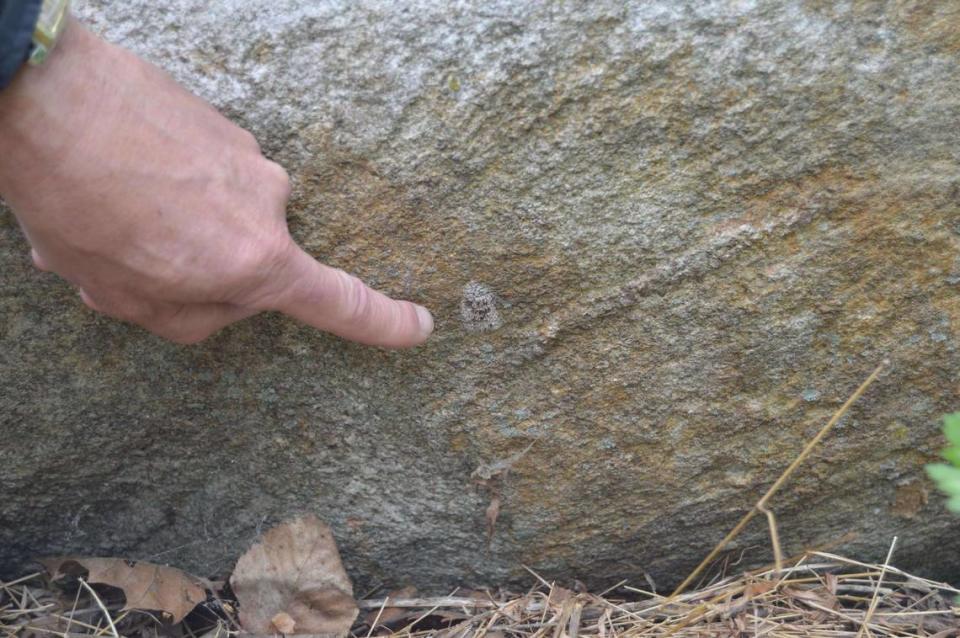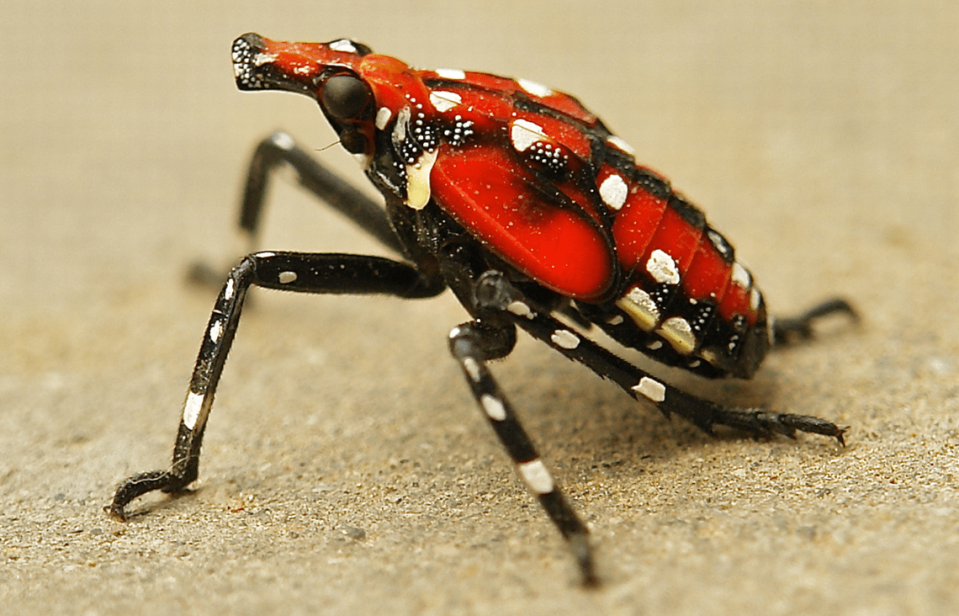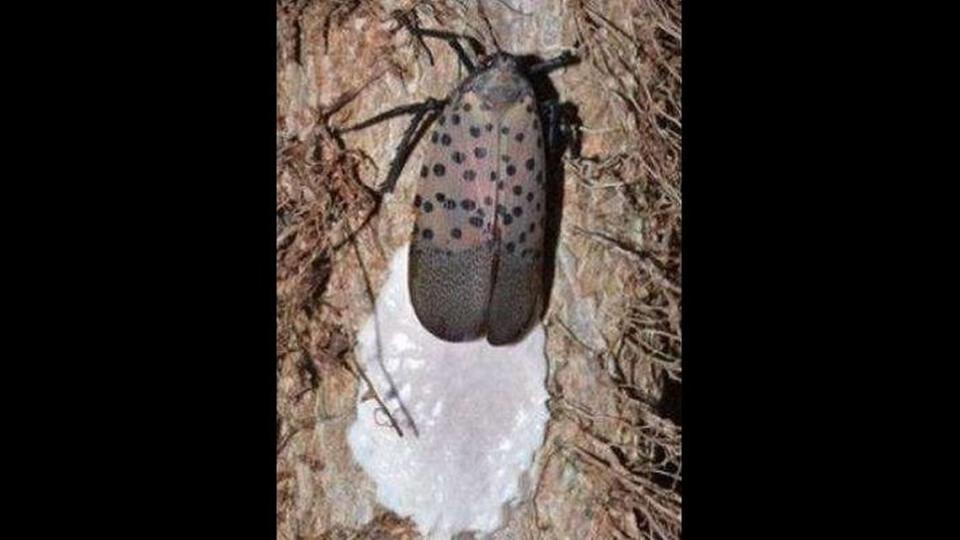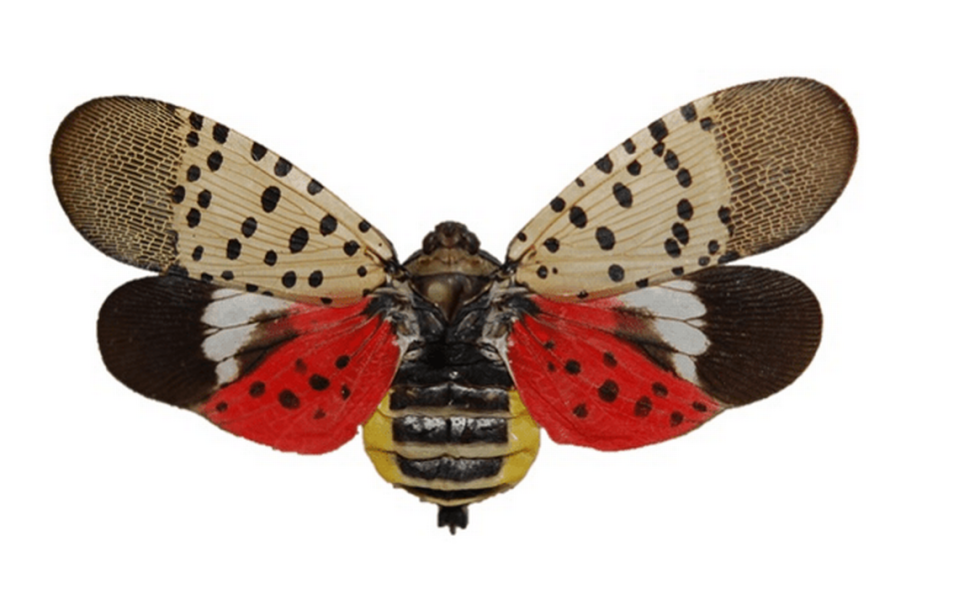Invasive species — a threat to wine grapes — shipped to California, officials say
Eggs of the spotted lanternfly, an insect species with a notoriously destructive appetite, were found in a shipment to Sonoma County, California.
At Truckee Border Protection, staff discovered 11 spotted lanternfly egg masses in a shipment of an art sculpture from New York, according to a June 10 news release by the California Association of Winegrape Growers.
The spotted lanternfly is an invasive species from Asia that arrived on a shipment of goods to Pennsylvania in 2014, according to the USDA. They multiplied and spread throughout the Northeast, wreaking havoc on local vegetation.
The insects ravenously eat a wide range of plants, secreting a sticky, sugary fluid that causes mold that further harms plant life. People who see them are advised to kill them immediately.
This is the first time the insect egg masses have been found in California, CAWG says. As troublesome as the spotted lanternfly can be in cities and suburbs, an infestation in California wine country could become an agricultural disaster.
“SLF has the potential to affect the entire winegrape industry,” CAWG said in the release.
“Spotted lanternflies have been found in 18 states and have proven to pose a serious threat to vineyards,” said Natalie Collins, association president. “These invasive insects feed on the sap of grapevines, while also leaving behind a sticky honeydew residue on the clusters and leaves. Their activities stress the plants, decrease vine health, and in some cases, can lead to plant death.”
When border staff noticed the unhatched hitchhikers in the March art shipment, they rejected the shipment and sent it to Nevada, where officials found 30 additional egg masses.
A powerwashing job ensued, and the shipment was sent back to California for reinspection.
Officials then released the shipment to its destination along with a Warning Hold Notice to allow for additional inspections by the county.
During one such reinspection on April 4, county officials opened the statue up for a more thorough examination. They found three more egg masses.
“The county staff concluded the inspection only after they were confident that no more egg masses were remaining,” CAWG said.
The number of times these eggs eluded officials is a testament to how sneaky this species can be.
According to the USDA, the eggs can easily be mistaken for “a smear of cracked mud,” as they appear dull and brown.

Most often, the egg masses can be found in trees. If you see one, the USDA asks you to smash it and scrape it into a Ziploc bag, adding rubbing alcohol or hand sanitizer into the bag to kill the eggs.
After they are hatched, the young insects appear black with white spots at first, then turn red as they get older.

As adults, the insects are about 1 inch long. At rest, they appear a tan-grey color with black spots. When they are in flight with their wings spread, their technicolored bodies become easier to spot. They have yellow abdomens with black stripes. Their outstretched wings have a bright red, black and white pattern.


The USDA asks people who see the spotted lanternflies to try to kill them.
The California Department of Food and Agriculture requests anyone who sees one in California to report it at (800) 491-1899 or www.CDFA.CA.GOV/Plant/ReportAPest.
‘Energetic’ humpback whale soaks a boat full of onlookers in California, photos show
Snakes descending upon substation in Tennessee keep causing power outages, company says
Pink creature seen in Northeast — perhaps for first time ever. How did it get there?

